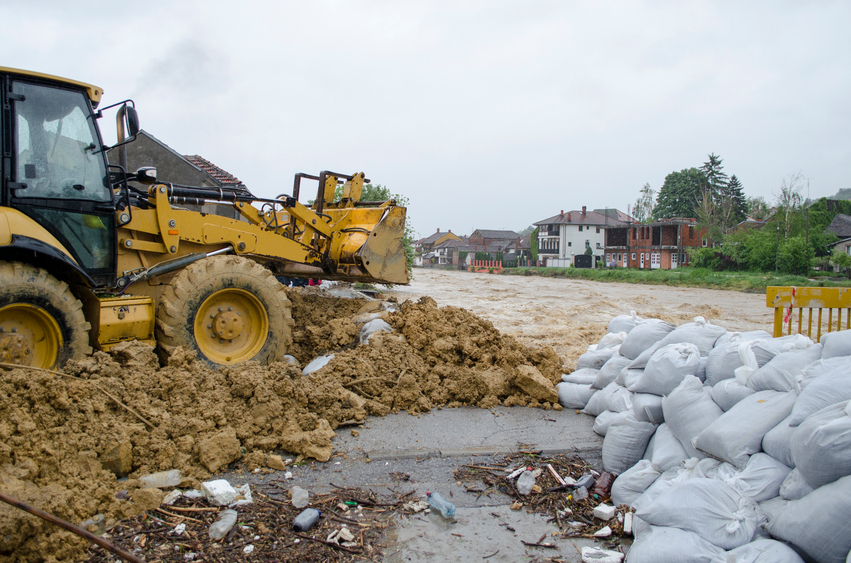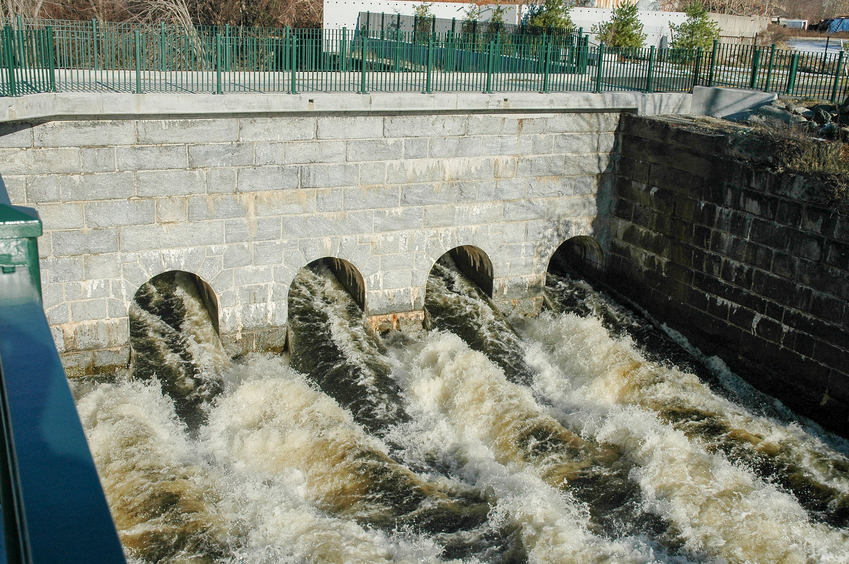North Carolina Structural and Ethics 15 PDH Discount Package 3
Coastal Construction - Determining Site-Specific Loads (S05-013)
Conduits, Culverts and Pipes - Design and Installation (S04-001)
Reducing Flood Risk to Residential Buildings that Cannot Be Elevated (S01-009)
Free Speech vs. Regulation of Professional Engineers (LE1-009)

This online engineering PDH course provides guidance on the design of the building envelope in the coastal environment. The building envelope comprises exterior doors, windows, skylights, exterior wall coverings, soffits, roof systems and attic vents. In buildings elevated on open foundations, the floor is also considered a partof the envelope.
High wind is the predominant natural hazards in the coastal environment that can cause damage to the building envelope.Other natural hazards also exist in some localities. These may include wind-driven rain, salt-laden air, seismic events, hail and wildfire. The vulnerabilities of the building envelope to these hazards are discussed in this course, and recommendations on mitigating them are provided.
This 4 PDH online course is intended for structural engineers, design and construction personnel and other technical professionals who are involved in coastal construction projects.
This PE continuing education course is intended to provide you with the following specific knowledge and skills:
- Familiarizing with the different design strategies of exterior doors to withstand and resist natural hazards
- Familiarizing with the different design strategies of windows and skylights to withstand and resist natural hazards
- Understanding the different design options for roof systems to resist high winds, hail and seismic activates
- Learning the design considerations for attic vents to withstand high winds, sun and wind driven rain
Upon successful completion of the quiz, print your Certificate of Completion instantly. (Note: if you are paying by check or money order, you will be able to print it after we receive your payment.) For your convenience, we will also email it to you. Please note that you can log in to your account at any time to access and print your Certificate of Completion.

This online engineering PDH course provides the design professional and others with guidance on how to determine, by calculation or graphical interpretation, the magnitude of the loads placed on a building by a particular natural hazard event or a combination of events. The calculation methods presented in this course are intended to serve as the basis of a methodology for applying the calculated loads to the building during the design process.
All coastal residential buildings should be designed and constructed to prevent flotation, collapse, or lateral movement due to the effects of wind and water loads acting simultaneously. Throughout this course, the recommendations of the engineering standards ASCE 7-10, Minimum Design Loads for Buildings and Other Structures (ASCE 2010) will be followed unless otherwise noted. ASCE 7-10 includes procedures for calculating dead and live loads; loads due to soil pressure, fluids, wind, snow, atmospheric ice, and earthquake; and load combinations.
This 5 PDH online course is intended for structural engineers, design and construction personnel, and other technical professionals who are involved in coastal construction projects.
This PE continuing education course is intended to provide you with the following specific knowledge and skills:
- The following site-specific loads for coastal buildings:
- Dead Loads
- Live Loads
- Snow Loads
- Flood Loads
- Tsunami Loads
- Wind Loads
- Tornado Loads
- Seismic Loads
- Determining the combination loads for coastal buildings
Upon successful completion of the quiz, print your Certificate of Completion instantly. (Note: if you are paying by check or money order, you will be able to print it after we receive your payment.) For your convenience, we will also email it to you. Please note that you can log in to your account at any time to access and print your Certificate of Completion.

This online engineering PDH course provides guidance on the design and construction of conduits, culverts, and pipes, as well as design procedures for trench/embankment earth loadings, highway loadings, railroad loadings, surface concentrated loadings, and internal/external fluid pressures.
In general, reinforced concrete conduits, culverts and pipes are used for dams, urban levees, and other levees where public safety is at risk or substantial property damage could occur. Corrugated metal pipes are acceptable through agricultural levees where conduits are 900-mm (36-in.) diameter and where levee embankments are not higher than 4 m (12 ft) above the conduit invert. Inlet structures, intake towers, gate wells, and outlet structures are usually concrete. However, corrugated metal structures may be used in agricultural and rural levees.
This 4 PDH online course is applicable to civil, structural and geotechnical engineers, as well as design and construction personnel involved with the design and installation of conduits, culverts and pipes.
This PE continuing education course is intended to provide you with the following specific knowledge and skills:
- Design and installation of cast-in-place conduits for dams
- Design and installation of circular reinforced concrete pipe for small dams and levees
- Design and installation of corrugated metal pipe for rural levees and culverts
- Design and installation of concrete culverts
- Design and installation of plastic pipe for other applications
- Design and installation of ductile iron and steel pipe for other applications
- Design and construction guidelines for pipe jacking
In this professional engineering CEU course, you need to review the US Corps of Engineers Publication EM 1110-2-2902, "Conduits, Culverts and Pipes".
Upon successful completion of the quiz, print your Certificate of Completion instantly. (Note: if you are paying by check or money order, you will be able to print it after we receive your payment.) For your convenience, we will also email it to you. Please note that you can log in to your account at any time to access and print your Certificate of Completion.

This online engineering PDH course describes alternative mitigation measures intended for a variety of housing types that cannot feasibly be elevated. The guidance applies to a variety of residential structures, including single family homes, and many mid-rise multi-family residential buildings.
Floods can happen anywhere at any time, which is why it is important to be prepared and to take steps before a flood event to protect your property from costly damage. Taking action to reduce the impact of a disaster is known as mitigation. There are a variety of flood mitigation options for homeowners—both for newly built homes as well as existing homes located in flood prone areas.
This 1 PDH online course is applicable to civil, structural and geotechnical engineers, as well as design and construction personnel involved with the planning and design of flood proofing homes.
This PE continuing education course is intended to provide you with the following specific knowledge and skills:
- Knowing how to select mitigation measures
- Learning about interior modifications and retrofit measures
- Familiarizing with wet and dry floodproofing measures
- Learning about barrier measures
Upon successful completion of the quiz, print your Certificate of Completion instantly. (Note: if you are paying by check or money order, you will be able to print it after we receive your payment.) For your convenience, we will also email it to you. Please note that you can log in to your account at any time to access and print your Certificate of Completion.

This online engineering PDH course will establish the relationship between the actions of a licensing board for professional engineers and the Constitutional right of free speech.
This course discusses the background and findings of a legal case that arose when a state licensing board for professional engineers attempted to restrict the right of an engineer from speaking about a public safety issue. Actual legal documents and associated correspondence are discussed, and their implications analyzed.
The 1 PDH online course is intended for all registered professional engineers wanting to know about the relation between constitutionally protected free speech and the powers of a licensing board for professional engineers.
This PE continuing education course is intended to provide you with the following specific knowledge and skills:
- Understanding the value of free speech in discovering the best solution to technical problems
- Realizing the difference between protected and unprotected speech
- Knowing an example in which the actions of a PE licensing board was limited by the Constitutional right of free speech
- Familiarizing with the meaning of a board letter that announces the opening of an investigation
- Understanding the meaning and use of a Notice to Impose a Civil Penalty
- Understanding the significance of working outside the context of an employment or contractual relationship
Upon successful completion of the quiz, print your Certificate of Completion instantly. (Note: if you are paying by check or money order, you will be able to print it after we receive your payment.) For your convenience, we will also email it to you. Please note that you can log in to your account at any time to access and print your Certificate of Completion.